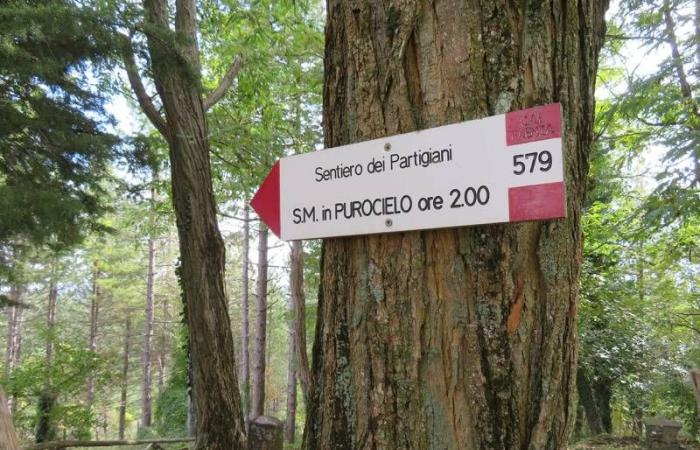Alex Ballieu
Several decades have passed since some local associations took on the task of preserving the Italian territorial heritage, in particular the part that concerns hiking; to date, more than 50 thousand kilometers of trails are constantly maintained. In the upper Sintria valley, belonging to the part of the Faenza Apennines on the border with Tuscany, between the Lamone and Senio valleys, there is the Frassati path, managed by the Uoei (Italian Hikers’ Workers’ Union) of Faenza, and the dei Partigiani, managed by the CAI (Italian mountaineering club).
The Frassati is dedicated to the mountaineer and blessed Pier Giorgio Frassati, born in Turin in 1901. After obtaining his classical high school diploma he dedicated his life to helping others, joining various associations including the CAI, given his passion for hiking, and finally he approaches the Dominican order as a tertiary. He died at the age of 25 due to fulminant polio, and was then buried in Turin, after a funeral attended by almost the entire city. The path of the same name is made up of 2 different itineraries, lasting approximately 4 and 6 hours respectively, which run along ridges and mainly wooded sections, starting from the Fontana Moneta refuge up to Croce Daniele. Along the route you can visit historic places such as the church of Sant’Andrea, the small churches of Presiola, Fornazzano and Croce Daniele.
The Partisans’ path, however, runs through all the significant places of the battles of Cà di Malanca and Santa Maria in Purocielo, where, in October 1944, the partisans attempted to join the Allied forces to attack the Germans, breaking their lines defensive and thus preparing the advance towards the plain. In memory of these bloody clashes, the Ca’ Malanca Residential Center for studies and initiatives on the Liberation Struggle was established in 1990. History can also be felt when walking along the path: two memorial stones, one in Cà di Malanca and one on the road to Santa Maria in Purocielo, were erected by the CAI to commemorate the dozens of partisans who fell during the battles. The path starts from the church of Santa Maria in Purocielo, where after 8.6 km it returns, completing a ring. In total the travel time is around 3 hours and 15 minutes, with a height difference of 400 metres.
During the flood of 16 and 17 May 2023, by which Faenza was seriously affected, suffering 60 million euros in damage, heavy rains caused several landslides spread across the entire territory, damaging several paths. The Frassati has undergone partial changes: the stretch near the waterfall of the Sintria stream was particularly affected, where the erosion of the rock made the passage previously equipped with chains dangerous. «Now, a new route allows you to cross the stream with a ford slightly downstream of the waterfall, while still guaranteeing safe access to the original path» says Pietro Cavina, secretary of the Uoei.
Other paths managed by the association such as the Garibaldi path and path 11 have also been altered: in particular the Garibaldi, which crosses areas close to the Badia di Susinana, was diverted due to large landslides along the original route. The new route, which still remains a pleasant experience for hikers, overlaps with other CAI routes and reaches Rocca San Michele, before descending along a carriage road to the I Salti farmhouse.
Furthermore, path 11, which originally ran from Pedù to the pillar on the CAI path 505, was altered following a landslide along the route. Now, instead of reaching Pedù from Chiesuola, the path climbs along a steep track that leads to the ridge north of the pillar: even if the route has been modified, the duration remains almost unchanged.
One of the hardest blows was instead suffered by the Partisans’ path, which is currently impassable: Claudio Patuelli, councilor responsible for the paths of the CAI of Faenza, explained that in addition to the structural damage, the refusal of the owners of the land, through which the path passes, made it impossible to start restoration work and allow their reopening.
In summary, all the paths mentioned (with the exception of the Partisans one) are currently practicable: however, as before the flood, cycling is not recommended in some sections for safety reasons.
For Latest Updates Follow us on Google News







